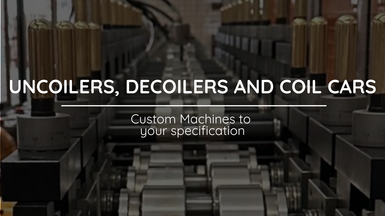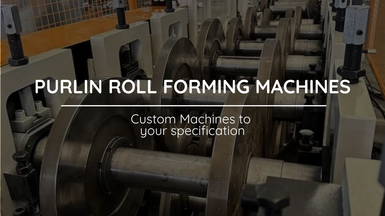
Can metal shear blades be sharpened?
If you have noticed that your shear blades aren't working as effectively as they should, it might be time to get them sharpened.
Posted on Wednesday, March 29, 2023
Shear Blade Sharpening
Dull, blunt blades can harm product quality, slow production, and waste time and money. Keeping your blades sharp will ensure you can keep your product line running seamlessly.
Metal shear blade sharpening - why bother?
Most shear blades found in metal roll-forming machines can be sharpened repeatedly, as the tool steel is highly durable. During the shearing process, the blades must be left to cool completely; otherwise, this could adversely affect their hardness.
If the metal shear blade isn't sharp enough, the machine has to penetrate the material with more force, putting excessive strain on the device and material. If the blade develops cracks, the end result could be less than desirable.
The quality of the cut is directly proportional to how sharp the blades are. If your shear blade has reversible edges, it's possible to rotate the blade to keep the cuts sharp, but once the blades have been flipped, both sides will be dull, and both sides will need sharpening.
How often should I sharpen my metal shear blades?
The frequency with which metal shear blades need sharpening will depend on several factors. How often the machine is put to work, the operational cycle and the material used in the roll-forming machine will affect how quickly shear blades can become dull and worn.
If it's time to sharpen your shear blades, contact a reputable company that has experience in shear blade grinding - they will be able to sharpen both surfaces and all of the cutting edges of the blades.
How do I know if it's time to get my metal shear blades sharpened?
Look at the blade's condition - if they look dull and have cracks, these are good signs that it's time to get them sharpened.
Shear grinding - what's the process?
There grinding machine will run along the length of the blades, just touching the surface as it sharpens the first flat surface of the blades. Once this has been done, the operator will manually check the edges for any remaining damage. It's vital to wash off the grinding dust in between grinding sessions to ensure the blades sit properly when operating the machine.
Once the first flat surface has been checked, the process is repeated on the second flat surface, then the blades are turned to sharpen the edges and then checked for damage. Sharpening will also remove any rust spots that have formed on the blades.
The technicians will secure the blades together for machine sharpening to be done simultaneously. The blades are turned again until the machine has gone over each edge before they are checked. The process usually takes around 10-15 minutes per side.
Once the sharpening process is over, the blades are checked for inspection. They are then demagnetized, coated in oil to protect them from corrosion, and wrapped and secured for transport back to the customer.
If you are looking for a reliable company to help ensure your roll-forming machine shear blades are in perfect working condition, contact the Rollforming LLC team today.
Roll Forming Machines LLC's New Factory
Posted on Sunday, March 23, 2025
We have relocated factories, which will be available for tours very soon.

Uncoiler, Decoiler and Coil Car Roll Forming Machine Accesories from Roll Forming Machines LLC
Posted on Sunday, November 24, 2024
Contact us today with your specifications for a custom Uncoiler, Decoiler or Coil Car at [email protected] or call us at (+1) (407) 859 1119

Stud and Track Roll Forming Machines from Roll Forming Machines LLC
Posted on Saturday, November 23, 2024
Contact us today with your specifications for a custom Stud and Track Machine at [email protected] or call us at (+1) (407) 859 1119

Cee and Zee Purlin Roll Forming Machines from Roll Forming Machines LLC
Posted on Saturday, November 23, 2024
Contact us today with your specifications for a custom Cee and Zee Purlin Machine at [email protected] or call us at (+1) (407) 859 1119